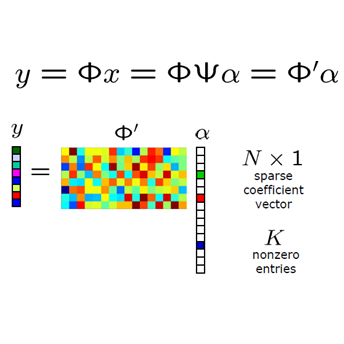Over the last decades, images have become an important source of information in many domains, thus their high quality has become necessary to acquire better information. One of the important issues that arise is image denoising, which means recovering a signal from inaccurately and/or partially measured samples. This interpretation is highly correlated to the compressive sensing theory, which is a revolutionary technology and implies that if a signal is sparse then the original signal can be obtained from a few measured values, which are much less, than the ones suggested by other used theories like Shannon's sampling theories. A strong factor in Compressive Sensing (CS) theory to achieve the sparsest solution and the noise removal from the corrupted image is the selection of the basis dictionary. In this paper, Discrete Cosine Transform (DCT) and moment transform (Tchebichef, Krawtchouk) are compared in order to achieve image denoising of Gaussian additive white noise based on compressive sensing and sparse approximation theory. The experimental results revealed that the basis dictionaries constructed by the moment transform perform competitively to the traditional DCT. The latter transform shows a higher PSNR of 30.82 dB and the same 0.91 SSIM value as the Tchebichef transform. Moreover, from the sparsity point of view, Krawtchouk moments provide approximately 20-30% more sparse results than DCT.
翻译:在过去几十年中,图像已成为许多领域的重要信息来源,因此其高质量已成为获取更好信息所必需的重要信息来源。出现的一个重要问题是图像去除,这意味着从不准确和(或)部分测量的样本中恢复信号。这种解释与压缩感测理论密切相关,这是一种革命技术,意味着如果信号稀疏,那么最初的信号就能从几个测量值中获得,这些值远低于香农抽样理论等其他使用过的理论所建议的值。在压缩感测理论(CS)理论中,实现最稀少的解决方案和清除腐败图像的噪音的一个强有力因素是选择基础字典。在本文中,Discrete Cosine变换(DCT)和瞬变(Tchebichef, Krawtchouk)与压缩感测论(Tchebichef, Kraftchouk)高度相关联,目的是根据压缩感测和稀少近似理论,实现高斯添加的白色噪音的图像消化。实验结果表明,当时构建的基础字典在竞争上转化为传统的DCT。后者的变异性显示大约30.82年的PSHIM值。




